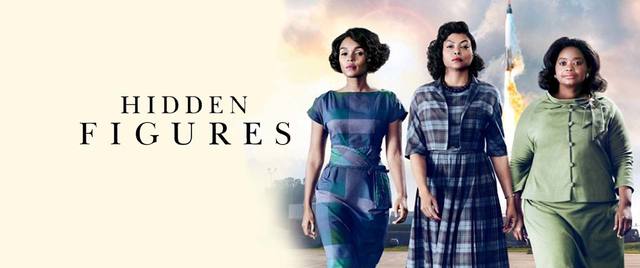
At times, it feels as though Hollywood has exploited every moment in history for the sake of a movie. It’s becoming rarer and rarer to find a historical figure who hasn’t had their story portrayed in a film in some way, so nowadays, when a film zeroes in on an interesting event that few know about, it’s typically worth mentioning. However, director Theodore Melfi’s Hidden Figures goes a step further. The movie uses an event many people know about, John Glenn’s orbit around the Earth, as its backdrop but tells it from a perspective few were aware of.
Scripted by Allison Schroeder and Melfi and based on Margot Lee Shetterly’s book of the same name, Hidden Figures follows Katharine Johnson, an African American woman who calculated the trajectories that made Glenn’s mission possible, and her African American coworkers Dorothy Vaughan and Mary Jackson during a time Virginia and NASA were still heavily segregated. Over the course of the movie, they rise in their respective fields and help make history at NASA.
Although it’s easy to see where the story is heading even with limited knowledge of the real Katharine Johnson, the moments Melfi and Schroeder chose to portray perfectly articulate the film’s themes and message. For example, one of Hidden Figures’ running threads follows Katharine as she attempts to use the restroom. Because the Langley Research Center’s bathrooms are still segregated, Katharine has to run to the basement of the only building on campus that houses a “colored” women’s room, located a half mile away, sometimes in the pouring rain, and always in high heels. But this provides a small example of the sort of race and gender discrimination these women faced throughout the movie. At every turn, they are either underestimated, ignored, or treated with hostility outright. However, most of the conflict and antagonism isn’t that explicit; rather, it’s the small reactions and subtle lines of dialogue that underscore the racism and sexism of the era. But because the odds are so heavily stacked against them, it’s hard not to hope they rocket through NASA’s glass ceiling, so to speak.
And in their own ways, Katharine, Mary, and Dorothy did. Hidden Figures may not have the intense stakes of a James Bond flick (and having the benefit of knowing the history of the Space Race and John Glenn’s mission in particular makes some plot points a foregone conclusion), but because the characters were so committed to their goals, their stories become compelling and inspirational. And the fact that the film’s themes and the characters’ struggles are still relevant today helps Hidden Figures stand out. In short, this is the sort of movie that the phrase “crowd-pleasing” was invented to describe.
